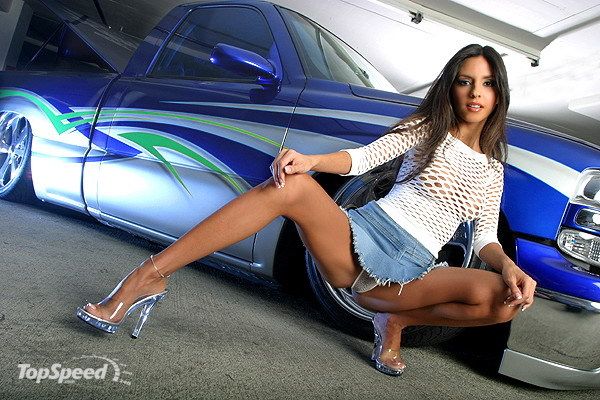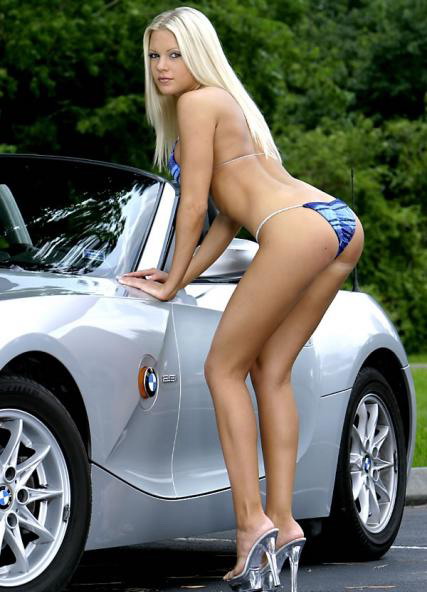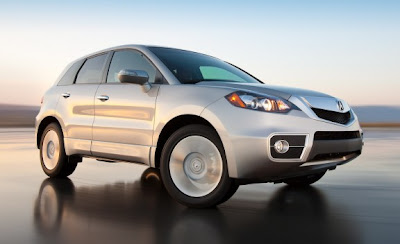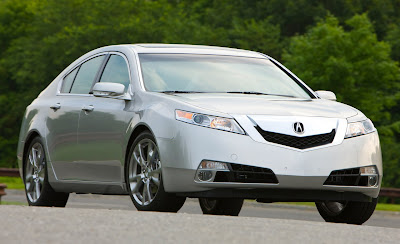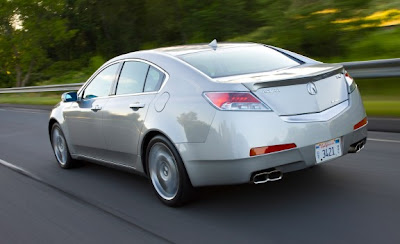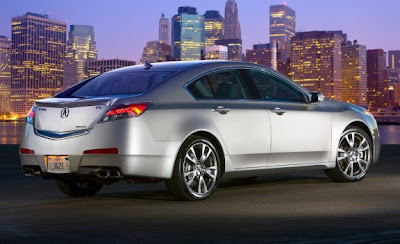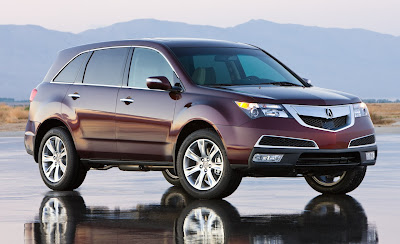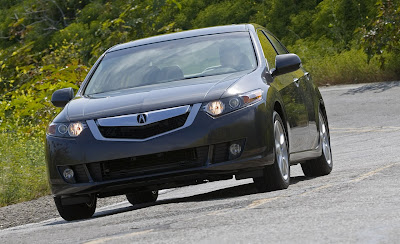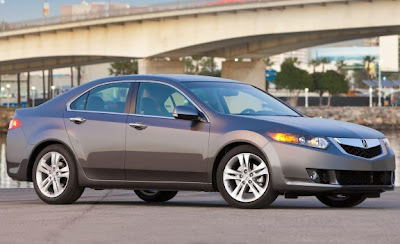The Union Budget announced by the Finance Minister, is all set to have a direct impact on the automotive sector of the country. Buying and maintaining a car or bike is going to be costly with a hike of 2% in the Excise Duty which has already led to an immediate and corresponding increase in the prices of automobiles and component. Running cost of bikes and cars too will get dearer with the suggested increase in Excise Duty on petrol and Diesel.
The Excise Duty on small cars now stands at 10% while on big cars, Mutli Utility Vehicles (MUV's) and SUV's the duty has bumped to 22%. The duty on Electric Vehicle makers stands at 4%. Adding to that, the Excise Duty will also cut their share from the prices of vehicle components like tyres,batteries, etc. A pair of heavy duty truck tyre would now cost Rs. 500 more, while that for a sedan will be higher by Rs. 250 a tyre. Batteries will be dearer by 2%. The tyre makers of the country have already resorted to this hike.
The government’s decision, taken as part of a partial rollback of the stimulus package in the Union Budget, saw companies announcing corresponding increases in prices almost immediately. These included big volume players like Maruti, Hyundai, Tata Motors, Mahindra, General Motors and Honda.
“Prices have to go up with the increase in excise and our cars will become dearer by 2% across the board,” Maruti chairman RC Bhargava said. The entire model range of Maruti will now come at revised rate with a hike between Rs. 3,000 and Rs. 13,000.
Hyundai said that the hike on its cars will range between Rs, 6,500 and Rs. 2,5000. The price of the Santro is expected to be up by Rs. 6,500, the i10 by Rs. 6,700 and the i20 by Rs. 9,500. “The increase will be on all the models,” Hyundai India’s marketing and sales director Arvind Saxena said.
Paul de Voijs, Managing Director, Volvo Auto India Pvt. Ltd stated, "As per the Union Budget 2010 presented by the hon' ble Finance Minister, the 2% increase in the excise duty on cars will lead to a hike on the car prices. Unfortunately this will be passed on to the end consumer as it is inevitable."
Tata Motors have spared the Nano for now from the revision, but the a hike between Rs. 4,600 and Rs. 18,700 will be levied on all other models coming out of Tata Motors factory.
|
|---|
|
|---|
Sunday, February 28, 2010
2010 Porsche Cayenne
The newest generation of the Porsche Cayenne is all set to make its world debut at the Geneva Motor Show soon in March. The new-generation Cayenne S Hybrid comes with a technically advanced and sophisticated parallel full hybrid drive. The car also boasts of a fuel efficiency figure of just 8.2 liters/100 kilometers which is equivalent to 34.4 mpg. The car is yet more efficient with CO2 emissions of just 193 g/km which makes the car perform like an eight-cylinder with the fuel economy of a six-cylinder machine. The car also features the new Tiptronic S eight-speed automatic transmission with Auto Start Stop and a widespread of gear ratios, thermal management on the engine and transmission cooling circuit, on-board network recuperation and variable engine cut-off.
 The new car offers a better on-road and off-road driving pleasure. The new design and shape of the car displays the typical ‘Porsche Look’ within the car with a sports-like character. The new car is more compact and dynamic than its predecessors. The Cayenne S Hybrid comes with a 3.0-litre supercharged V6 engine that runs on petrol and has the capacity to churn out 333 horses. Along with this is an electric motor which produces an additional 47 bhp of power which adds up to the overall power and torque of 380 bhp and 580 Nm respectively. Apart from the hybrid, there will also be various other options powered by both petrol as well as diesel engines. The heart of the Cayenne Turbo is a 4.8-litre V8 that churns out 500 horses.
The new car offers a better on-road and off-road driving pleasure. The new design and shape of the car displays the typical ‘Porsche Look’ within the car with a sports-like character. The new car is more compact and dynamic than its predecessors. The Cayenne S Hybrid comes with a 3.0-litre supercharged V6 engine that runs on petrol and has the capacity to churn out 333 horses. Along with this is an electric motor which produces an additional 47 bhp of power which adds up to the overall power and torque of 380 bhp and 580 Nm respectively. Apart from the hybrid, there will also be various other options powered by both petrol as well as diesel engines. The heart of the Cayenne Turbo is a 4.8-litre V8 that churns out 500 horses.
The car will be available in the European market from the 8th of May costing an equivalent of Rs 29.40 lakh while the Cayenne Turbo is priced at about Rs 58 lakh. However, do not expect the prices to be same in India due to the infamous import duties.
The Cayenne S Hybrid along with the entire list of models in the new generations is specialized in efficiency and performance in their respective segments. A whopping 23 percent fall has been observed in fuel consumption which has made the car cleaner and greener. The ultra-light weight construction along with the blend of the perfect materials has helped bring down the weight of the car to 180 kgs along with a better standard of safety and quality. The weight factor has not only improved efficiency but also improved performance, agility and handling.
 The new car offers a better on-road and off-road driving pleasure. The new design and shape of the car displays the typical ‘Porsche Look’ within the car with a sports-like character. The new car is more compact and dynamic than its predecessors. The Cayenne S Hybrid comes with a 3.0-litre supercharged V6 engine that runs on petrol and has the capacity to churn out 333 horses. Along with this is an electric motor which produces an additional 47 bhp of power which adds up to the overall power and torque of 380 bhp and 580 Nm respectively. Apart from the hybrid, there will also be various other options powered by both petrol as well as diesel engines. The heart of the Cayenne Turbo is a 4.8-litre V8 that churns out 500 horses.
The new car offers a better on-road and off-road driving pleasure. The new design and shape of the car displays the typical ‘Porsche Look’ within the car with a sports-like character. The new car is more compact and dynamic than its predecessors. The Cayenne S Hybrid comes with a 3.0-litre supercharged V6 engine that runs on petrol and has the capacity to churn out 333 horses. Along with this is an electric motor which produces an additional 47 bhp of power which adds up to the overall power and torque of 380 bhp and 580 Nm respectively. Apart from the hybrid, there will also be various other options powered by both petrol as well as diesel engines. The heart of the Cayenne Turbo is a 4.8-litre V8 that churns out 500 horses.
Labels:
Porsche
Scorpion Car
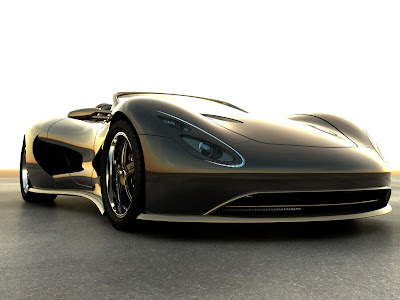
This car is hydrogen fuel injected hybrid. This innovative car utilises the new 'hydrogen on demand' technology, which generates water from the inbuilt tank, turns it into hydrogen and then injects it into the car's system.
Mini Art Car

Friday, February 26, 2010
Undisguised - Tata Aria Spotted Near Pune
One of motoroids regular readers sent this scoop shots of the Tata Aria doing its final testing rounds while being completely undisguised. Though we have already seen the MUV in flesh at the 2010 Auto Expo, we hadn't seen the vehicle running on road in its final production form. As per our friend who caught the Aria on cam, the vehicle was extremely quiet even when doing speeds of 130 km/h! On a few bumps in the road surface on the Pune-Mumbai highway, the vehicle seemed to have quite a significant bounciness / body roll. Later the vehicle pulled over to a roadside hotel, where the reader further followed it. As per his observations, even at idle RPM, there is hardly any diesel clatter as compared to the similar engined Safari DICOR.
Labels:
Tata Motors
Diamond Covered Car

Labels:
Car Prices
Chromed Out Ferrari 599 GTB Fiorano
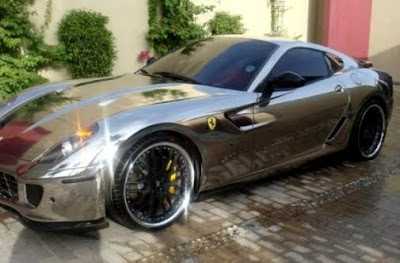
Saudi Arabians love Cars. They love the quarter mile, the twisties and even making their cars look custom. It seems that they have a big fascination with chrome as quite a few car pictures have surface from there resulting in flashy flashes. This ferrari is like no other Ferrari ; it will blind you if u don't have your sunglasses on.
Thursday, February 25, 2010
Ford Super Chief 2012

The Super Chief features Ford's new underride protection system called Blockerbeam that prevents smaller cars from riding up under the big rig during a crash while better dissipating the resulting energy between the two vehicles. The bold exteerior wrapped in a stainless style type skin is accompanied by perhaps the interior ever that features a glass roof bisected by aleather-wrapped grid and automated ottomans for weary rear passengers.
Running on Hydrogen, the supercharged V-10 engine provides upto 12 percent fuel economy improvement on an energy equivalent basis versus a non-supercharged gasoline V-10 and nearly miles per fill up.
Labels:
Ford
2011 Volvo C30
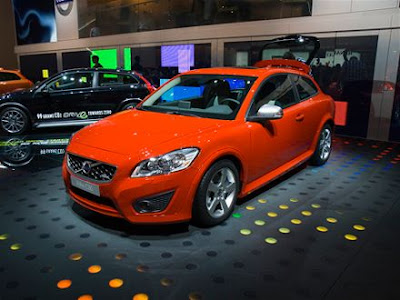
The 2011 Volvo C30 gets freshened exterior and interior styling. Its automaker is Swedish. It shares some elements of the basic design with S40 sedan and V50 wagon. C30 is 8.5 inches shorter and about 300 lb lighter than the S40. It reprise T5 and T5 design trim levels. Both use a turbocharged 227-horsepower 2.5 litre 5 cylinder engine and a 6 speed manual transmission or optional 5 speed automatic. It also consist safety features include ABS , traction control ,antikids system, front side airbags and curtain side airbags . Having four bucket style seats,has a sport suspension and 18 inch wheels. Option includes power front seats, leather upholstery, heated front seats, bi xenon headlights, blind sport alert, and a navigation system. Keyless access and engine start is optional on the R-design.
Now this is how you test a car - Chevrolet Cruze - Road tested & Reviewed
Here our partners at Motoroids put the Chevrolet Cruze to what we call "Now this is how you do a road test", driving the car 600 Kms in all sorts of terrain to try and prove what the car is really worth. Interested to know the verdict. Visit our Car Reviews and Road Tests section to read the full story. Take my word for it, it is worth reading it.
Read the full review here "Chevrolet Cruze Road Test & Car Review"
Read the full review here "Chevrolet Cruze Road Test & Car Review"
Labels:
Chevrolet
Wednesday, February 24, 2010
Review: 2010 Range Rover Sport Supercharged

Despite enduring a string of financial hardships, Land Rover still enjoys one of the clearest and most robust brand identities in the automotive kingdom. The English automaker has held the same core values since the company's first off-roader was created by Maurice Wilks in 1948. Wilks reportedly designed the first Land Rover to emulate a Jeep he had driven, and the first Land Rover prototype actually utilized a chassis borrowed from that legendary American off-roader. And much like Jeep, when you think of Land Rover, the words rugged, purpose-built, and capable are sure to come to mind, but the two storied marques part company when it comes to luxury amenities. England's four-wheeling pride and joy can be found in places like Africa, the Middle East, Australia's Outback and as well as the ritziest precincts of Beverly Hills and Monte Carlo.
While the core identity of Land Rover hasn't deviated much over the years, its product lineup has grown substantially. After Ford purchased Land Rover from BMW in 2000, the brand added the supremely capable LR4 and Range Rover Sport to a struggling lineup. The Sport traces its looks and name to the top-end Range Rover model, but its underpinnings are actually based on the LR4, with an integrated bodyframe semi-monocoque construction for a combination of rough and ready off-roading and good noise isolation characteristics.
The sportiest of Range Rovers has been a solid entry in the luxury mountain climbing segment for a half-decade, but the folks at Land Rover have given the Sport a very thorough update for 2010 to help it live up to fast and flashy new competitors like the Porsche Cayenne and BMW's X5/X6 M twins. We were able to get our hands on a new 2010 Range Rover Sport with the company's new Jaguar-derived supercharged 5.0-liter V8 to see if it's as accomplished on paved streets as it is off-road.
When we say that the Range Rover Sport has been updated for 2010, we mean thoroughly overhauled. It may not look all that different on the outside, but among the upgrades for 2010 are a pair of more powerful engines, a new six-speed automatic transmission and comprehensive – if subtle – alterations to the accommodations. Exterior changes include new, impressive-looking LED-encrusted headlights and taillights that give the Sport a more commanding presence on the road. Other than the new lights, though, the Range Rover Sport looks nearly identical to the model it replaces, which is just fine with us. Range Rover's classic design remains the black tuxedo of the luxury SUV set, with an intrinsically tough-looking stance and manly lines throughout. Our completely loaded Bournville (fancy word for really dark brown) Range Rover Sport carried an MSRP of $82,345 with standard navigation and moonroof, along with every option box checked, including rear-seat DVD, upgraded 20-inch wheels and HD Radio. A hefty price tag to be sure, but is it worth it?
On the inside, we'd say yes... for the most part. Land Rover started with the familial cockpit layout that's become a staple of the marque, along with upgraded materials and a host technological improvements. High-grade leather is present just about anywhere your hand falls and the use of matte finish woods is among the best we've ever seen. Seemingly everybody we transported during our week with the vehicle wanted to touch the trim for themselves, as evidenced by the multitude of fingerprints on the leathery dash. We can't blame anyone for getting a case of the fondles (*ahem*) when sitting in the front seat of the Land Rover, as we can't recall a vehicle with better materials at this (lofty) price point. Land Rover has even swapped out the seats for 2010, and the new, deeper thrones have ample electronic-controlled bolstering to keep your butt planted during aggressive driving.



One of the things we didn't like about past Land Rover interiors was their labyrinthine maze of buttons splayed across the center console. We apparently weren't alone in disliking the button-palooza, as Tata Motors' luxury SUV outfit has cut 50 percent of its overall press-points for 2010, and the remaining switchgear is easy-to-reach and a snap to navigate. And speaking of navigation, our Range Rover Sport tester came standard with a seven-inch touchscreen nav/infotainment unit, a no-brainer for an adventure-ready $82,000 luxury SUV. We'd love to tell you the nav was a hoot to use, but unfortunately, that was far from the case.
For starters, the screen is smaller than the one you can find in other vehicles at half the price, and its slight stature is amplified by the fact that the Range Rover control array is the Spruce Goose of center stacks. We'd be able to overlook this one problem if the system was responsive and easy to use. Again, not so much. Every time we touched the screen, there was a persistent latency between contact and execution of the command. Our fully-loaded tester also came with LR's optional rear-seat entertainment package. When we saw a pair of massive LCD screens embedded into the back of the front seat headrests, we immediately thought the kids were in for a treat. What we didn't anticipate was how big of a headache it was going to be to pop in a DVD for the kids to enjoy while we have our way with the 510 horsepower manwagon.




When it came time to take the family for a ride, we loaded up the kids along with a copy of The Pink Panther. After everyone piled into the gorgeously appointed SUV, Dad opened the glove box to insert the DVD. Nothing there. Maybe the CD slot in the dash doubles as a DVD reader? Nope. Oh, then it must be hiding beneath the center armrest. Again, no. Luckily, we had a 13 year-old in the back seat. Anything back there? Under the seat? Nope. We checked the manual (no mention) and we looked in the trunk. Nothing. After wasting a half hour of our lives, we made a call to editor Paukert for some council. Paukert reminded us that older Range Rovers used to have a small, obscure access panel in the boot above the passenger-side rear tire well.
We ventured outside one more time to take a look, and wouldn't you know it, there was a tiny access panel staring us right in the face. We'd seen the panel before, but assumed that it was just too small to be anything but a fuse box. Unfortunately, we were wrong. Nestled into the panel ever so tightly was a six-DVD changer buried deep into a dark, narrow sarcophagus. After a couple of minutes of jostling, we were able to pry out a flimsy cartridge. The Pink Panther was inserted and the kids re-entered the vehicle. We then fooled around with the LCD interface for five minutes before realizing that we had to labor through the nav interface to turn on each headrest-mounted LCD before playing the DVD. Now we know what it feels like to be Santa Claus at a Philadelphia Eagles game. Needless to say, we subsequently watched the same movie every time the family was in the vehicle, and we're pretty sure the disc was still in the boot when it was picked up. And to think that the rear-seat entertainment package is the most expensive Range Rover Sport option at $2,500. Ouch. Fortunately, the Range Rover Sport was much more enjoyable once we actually started driving.


Getting behind the wheel of a Range Rover Sport is a bit like entering a Brinks truck, albeit a very nicely appointed one. It's hard not to feel invincible from the moment you close the doors with a confidence-inspiring thud and stare out the front window only to revel in your commanding seating position. And those new seats? They're a fitting reward for the driver who plops down 82-large. The chairs are Lazy Boy-comfy but with very respectable bolstering for a 5,900 pound utility vehicle. And as we would soon find out, said bolstering is very welcome given the Range Rover Sport's extraordinarily powerful drivetrain.
The biggest aspect of the Sport's refresh is a pair of completely new powertrains, and we were lucky enough to get the direct injected, supercharged 5.0-liter mill under the bonnet of our tester. With 510 horsepower and 461 pound-feet of thrust, our tester felt more like a supersized sportwagon than a massive SUV. Land Rover claims a 0-60 mph time of 5.9 seconds, and after one stab at the throttle, we can attest to the accuracy of that time. The Eaton-sourced twin-vortex supercharger is 16 percent more efficient than the booster it replaces, giving the RR Sport another 135 ponies (versus the naturally aspirated model) while still passing ULEV2 emissions regulations. The new engines figure to be more reliable, too, and they carry 15,000-mile service intervals, effectively doubling the amount of regal mud bogging between dealer visits. Land Rover went to ZF for its newest transmission, and the HP28 six-speed unit is a very smooth operator. Paddle-shifters were on-hand, but we had no desire to use them more than once thanks to the engine's surplus of torque.

And just because the RR Sport weighs in at nearly three tons doesn't mean that Land Rover has built a sloppy cornerer. LR hasn't obliterated any longstanding laws of physics, but by adding adaptive vehicle dynamics, it's helped bend some rules. The Landie's DampTronic valve tech monitors and optimizes damper pressure 500 times per second, helping even first-time drivers feel confident and controlled behind the wheel. Steering feel has also been improved by stiffening the front suspension's lower arm bushings.
While we certainly couldn't verify Land Rover's claim of 500x per second damping pressure monitoring, we can tell you that the sporty Range Rover feels very surefooted in a wide variety of driving conditions and during aggressive driving. We were pleasantly surprised at how flat this beast is under hard cornering – it's like Land Rover built a tank that was specifically designed for slaloms. Actually, tank-like is a great way to describe the feeling we got when behind the wheel, but not in a laboring, trench warfare way. More like, this is as close as the English could come to duplicating the Abrams Tank while still retaining the driving dynamics of a vehicle much smaller than it really is. The steering is nicely weighted and has some level of feedback, though it won't be confused with a Porsche Cayenne any time soon. The Range Rover's five spoke, 20-inch wheels fill out the wells just fine, and the 14.2-inch ventilated rotors up front and 13.8-inch stoppers at the rear provide enough fade-free stopping power to keep your Land Rover from dancing with bumpers or boulders.




The Land Rover Sport may have the heart of an on-road athlete, but it is constructed to excel off-road even more than it does on pavement. Every Range Rover Sport comes with Land Rover's Terrain Response system; a dial with six settings for varying driving conditions. The driver can select from settings including general driving, sand (new for 2010), rock crawl, mud and ruts, and grass/gravel/snow. The other all-new setting, which is only available on the supercharged model, is Dynamic Program, which tightens steering and body control while also reconfiguring the stability control system for snappier responses. Select this option and Land Rover promises that you'll enjoy a more athletic on-road driving experience. We found Dynamic Program to have improved steering and throttle response, but a single performance-inspired setting does not a 3 Series-fighter make. It does, however, result in a confident-handling luxury SUV. Our favorite setting was the winter detent, because Southeast Michigan received about two inches of snow right when we took delivery of our tester. While the settings didn't cut out sliding and slipping altogether, it did a fantastic job of keeping us on the straight and narrow.
Since our test model had every available option, we were also able to test Land Rover's adaptive cruise control. While we're not huge fans of most adaptive cruise systems, we were very happy that Land Rover has done an excellent job of making the system easy-to-use. If you find yourself slowing down too far from the vehicle in front of you on the highway, simply slick a steering wheel-mounted button to decrease the trailing distance. A five-inch, grayscale LCD located in the gauge cluster shows the driver which setting he or she is using. Keep in mind, though, that unlike some advanced adaptive cruise systems that will bring a vehicle to a complete stop if the radar system senses an object in its direct path, in our experience, Land Rover's system will slow the Sport to about 10 mph. From there, it's up to the driver and those capable brakes to bring the Sport to a complete stop.

On the efficiency front, Land Rover says that the 2010 Sport is more economical than the model it replaces, which is no surprise when considering how thirsty the outgoing model was. Our time with the RR Sport added up to fuel economy of about 13 miles-per-gallon in mixed yet spirited driving. The EPA says you should expect 17 mpg on the highway and 12 mpg in the city, so don't trade in the family Mini just yet.
In the end, it's hard not to love the Range Rover Sport because it remains straightforward in what it promises and diligent in ensuring that those promises are kept. The new model delivers with luxurious appointments and vastly improved performance while honoring a 60-year tradition of off-road capability. Mix in the boxy good looks that come standard on every Gaydon gladiator, and we couldn't help but fall for this Land Rover quite a bit. Okay, so we didn't take our tester on safari, but it did everything we asked of it during our time in the urban jungle. Like us, we suspect that most Range Rover Sport owners won't often take the road less traveled, though we're sure the ability to easily hurdle a cement parking barrier in complete luxury is a fine ability to have should the need ever arise.
[Source: Autoblog]
Labels:
2010,
cars,
land rover,
News,
Review,
sports cars,
SUV
Review: 2010 Range Rover Sport Supercharged

Despite enduring a string of financial hardships, Land Rover still enjoys one of the clearest and most robust brand identities in the automotive kingdom. The English automaker has held the same core values since the company's first off-roader was created by Maurice Wilks in 1948. Wilks reportedly designed the first Land Rover to emulate a Jeep he had driven, and the first Land Rover prototype actually utilized a chassis borrowed from that legendary American off-roader. And much like Jeep, when you think of Land Rover, the words rugged, purpose-built, and capable are sure to come to mind, but the two storied marques part company when it comes to luxury amenities. England's four-wheeling pride and joy can be found in places like Africa, the Middle East, Australia's Outback and as well as the ritziest precincts of Beverly Hills and Monte Carlo.
While the core identity of Land Rover hasn't deviated much over the years, its product lineup has grown substantially. After Ford purchased Land Rover from BMW in 2000, the brand added the supremely capable LR4 and Range Rover Sport to a struggling lineup. The Sport traces its looks and name to the top-end Range Rover model, but its underpinnings are actually based on the LR4, with an integrated bodyframe semi-monocoque construction for a combination of rough and ready off-roading and good noise isolation characteristics.
The sportiest of Range Rovers has been a solid entry in the luxury mountain climbing segment for a half-decade, but the folks at Land Rover have given the Sport a very thorough update for 2010 to help it live up to fast and flashy new competitors like the Porsche Cayenne and BMW's X5/X6 M twins. We were able to get our hands on a new 2010 Range Rover Sport with the company's new Jaguar-derived supercharged 5.0-liter V8 to see if it's as accomplished on paved streets as it is off-road.
When we say that the Range Rover Sport has been updated for 2010, we mean thoroughly overhauled. It may not look all that different on the outside, but among the upgrades for 2010 are a pair of more powerful engines, a new six-speed automatic transmission and comprehensive – if subtle – alterations to the accommodations. Exterior changes include new, impressive-looking LED-encrusted headlights and taillights that give the Sport a more commanding presence on the road. Other than the new lights, though, the Range Rover Sport looks nearly identical to the model it replaces, which is just fine with us. Range Rover's classic design remains the black tuxedo of the luxury SUV set, with an intrinsically tough-looking stance and manly lines throughout. Our completely loaded Bournville (fancy word for really dark brown) Range Rover Sport carried an MSRP of $82,345 with standard navigation and moonroof, along with every option box checked, including rear-seat DVD, upgraded 20-inch wheels and HD Radio. A hefty price tag to be sure, but is it worth it?
On the inside, we'd say yes... for the most part. Land Rover started with the familial cockpit layout that's become a staple of the marque, along with upgraded materials and a host technological improvements. High-grade leather is present just about anywhere your hand falls and the use of matte finish woods is among the best we've ever seen. Seemingly everybody we transported during our week with the vehicle wanted to touch the trim for themselves, as evidenced by the multitude of fingerprints on the leathery dash. We can't blame anyone for getting a case of the fondles (*ahem*) when sitting in the front seat of the Land Rover, as we can't recall a vehicle with better materials at this (lofty) price point. Land Rover has even swapped out the seats for 2010, and the new, deeper thrones have ample electronic-controlled bolstering to keep your butt planted during aggressive driving.



One of the things we didn't like about past Land Rover interiors was their labyrinthine maze of buttons splayed across the center console. We apparently weren't alone in disliking the button-palooza, as Tata Motors' luxury SUV outfit has cut 50 percent of its overall press-points for 2010, and the remaining switchgear is easy-to-reach and a snap to navigate. And speaking of navigation, our Range Rover Sport tester came standard with a seven-inch touchscreen nav/infotainment unit, a no-brainer for an adventure-ready $82,000 luxury SUV. We'd love to tell you the nav was a hoot to use, but unfortunately, that was far from the case.
For starters, the screen is smaller than the one you can find in other vehicles at half the price, and its slight stature is amplified by the fact that the Range Rover control array is the Spruce Goose of center stacks. We'd be able to overlook this one problem if the system was responsive and easy to use. Again, not so much. Every time we touched the screen, there was a persistent latency between contact and execution of the command. Our fully-loaded tester also came with LR's optional rear-seat entertainment package. When we saw a pair of massive LCD screens embedded into the back of the front seat headrests, we immediately thought the kids were in for a treat. What we didn't anticipate was how big of a headache it was going to be to pop in a DVD for the kids to enjoy while we have our way with the 510 horsepower manwagon.




When it came time to take the family for a ride, we loaded up the kids along with a copy of The Pink Panther. After everyone piled into the gorgeously appointed SUV, Dad opened the glove box to insert the DVD. Nothing there. Maybe the CD slot in the dash doubles as a DVD reader? Nope. Oh, then it must be hiding beneath the center armrest. Again, no. Luckily, we had a 13 year-old in the back seat. Anything back there? Under the seat? Nope. We checked the manual (no mention) and we looked in the trunk. Nothing. After wasting a half hour of our lives, we made a call to editor Paukert for some council. Paukert reminded us that older Range Rovers used to have a small, obscure access panel in the boot above the passenger-side rear tire well.
We ventured outside one more time to take a look, and wouldn't you know it, there was a tiny access panel staring us right in the face. We'd seen the panel before, but assumed that it was just too small to be anything but a fuse box. Unfortunately, we were wrong. Nestled into the panel ever so tightly was a six-DVD changer buried deep into a dark, narrow sarcophagus. After a couple of minutes of jostling, we were able to pry out a flimsy cartridge. The Pink Panther was inserted and the kids re-entered the vehicle. We then fooled around with the LCD interface for five minutes before realizing that we had to labor through the nav interface to turn on each headrest-mounted LCD before playing the DVD. Now we know what it feels like to be Santa Claus at a Philadelphia Eagles game. Needless to say, we subsequently watched the same movie every time the family was in the vehicle, and we're pretty sure the disc was still in the boot when it was picked up. And to think that the rear-seat entertainment package is the most expensive Range Rover Sport option at $2,500. Ouch. Fortunately, the Range Rover Sport was much more enjoyable once we actually started driving.


Getting behind the wheel of a Range Rover Sport is a bit like entering a Brinks truck, albeit a very nicely appointed one. It's hard not to feel invincible from the moment you close the doors with a confidence-inspiring thud and stare out the front window only to revel in your commanding seating position. And those new seats? They're a fitting reward for the driver who plops down 82-large. The chairs are Lazy Boy-comfy but with very respectable bolstering for a 5,900 pound utility vehicle. And as we would soon find out, said bolstering is very welcome given the Range Rover Sport's extraordinarily powerful drivetrain.
The biggest aspect of the Sport's refresh is a pair of completely new powertrains, and we were lucky enough to get the direct injected, supercharged 5.0-liter mill under the bonnet of our tester. With 510 horsepower and 461 pound-feet of thrust, our tester felt more like a supersized sportwagon than a massive SUV. Land Rover claims a 0-60 mph time of 5.9 seconds, and after one stab at the throttle, we can attest to the accuracy of that time. The Eaton-sourced twin-vortex supercharger is 16 percent more efficient than the booster it replaces, giving the RR Sport another 135 ponies (versus the naturally aspirated model) while still passing ULEV2 emissions regulations. The new engines figure to be more reliable, too, and they carry 15,000-mile service intervals, effectively doubling the amount of regal mud bogging between dealer visits. Land Rover went to ZF for its newest transmission, and the HP28 six-speed unit is a very smooth operator. Paddle-shifters were on-hand, but we had no desire to use them more than once thanks to the engine's surplus of torque.

And just because the RR Sport weighs in at nearly three tons doesn't mean that Land Rover has built a sloppy cornerer. LR hasn't obliterated any longstanding laws of physics, but by adding adaptive vehicle dynamics, it's helped bend some rules. The Landie's DampTronic valve tech monitors and optimizes damper pressure 500 times per second, helping even first-time drivers feel confident and controlled behind the wheel. Steering feel has also been improved by stiffening the front suspension's lower arm bushings.
While we certainly couldn't verify Land Rover's claim of 500x per second damping pressure monitoring, we can tell you that the sporty Range Rover feels very surefooted in a wide variety of driving conditions and during aggressive driving. We were pleasantly surprised at how flat this beast is under hard cornering – it's like Land Rover built a tank that was specifically designed for slaloms. Actually, tank-like is a great way to describe the feeling we got when behind the wheel, but not in a laboring, trench warfare way. More like, this is as close as the English could come to duplicating the Abrams Tank while still retaining the driving dynamics of a vehicle much smaller than it really is. The steering is nicely weighted and has some level of feedback, though it won't be confused with a Porsche Cayenne any time soon. The Range Rover's five spoke, 20-inch wheels fill out the wells just fine, and the 14.2-inch ventilated rotors up front and 13.8-inch stoppers at the rear provide enough fade-free stopping power to keep your Land Rover from dancing with bumpers or boulders.




The Land Rover Sport may have the heart of an on-road athlete, but it is constructed to excel off-road even more than it does on pavement. Every Range Rover Sport comes with Land Rover's Terrain Response system; a dial with six settings for varying driving conditions. The driver can select from settings including general driving, sand (new for 2010), rock crawl, mud and ruts, and grass/gravel/snow. The other all-new setting, which is only available on the supercharged model, is Dynamic Program, which tightens steering and body control while also reconfiguring the stability control system for snappier responses. Select this option and Land Rover promises that you'll enjoy a more athletic on-road driving experience. We found Dynamic Program to have improved steering and throttle response, but a single performance-inspired setting does not a 3 Series-fighter make. It does, however, result in a confident-handling luxury SUV. Our favorite setting was the winter detent, because Southeast Michigan received about two inches of snow right when we took delivery of our tester. While the settings didn't cut out sliding and slipping altogether, it did a fantastic job of keeping us on the straight and narrow.
Since our test model had every available option, we were also able to test Land Rover's adaptive cruise control. While we're not huge fans of most adaptive cruise systems, we were very happy that Land Rover has done an excellent job of making the system easy-to-use. If you find yourself slowing down too far from the vehicle in front of you on the highway, simply slick a steering wheel-mounted button to decrease the trailing distance. A five-inch, grayscale LCD located in the gauge cluster shows the driver which setting he or she is using. Keep in mind, though, that unlike some advanced adaptive cruise systems that will bring a vehicle to a complete stop if the radar system senses an object in its direct path, in our experience, Land Rover's system will slow the Sport to about 10 mph. From there, it's up to the driver and those capable brakes to bring the Sport to a complete stop.

On the efficiency front, Land Rover says that the 2010 Sport is more economical than the model it replaces, which is no surprise when considering how thirsty the outgoing model was. Our time with the RR Sport added up to fuel economy of about 13 miles-per-gallon in mixed yet spirited driving. The EPA says you should expect 17 mpg on the highway and 12 mpg in the city, so don't trade in the family Mini just yet.
In the end, it's hard not to love the Range Rover Sport because it remains straightforward in what it promises and diligent in ensuring that those promises are kept. The new model delivers with luxurious appointments and vastly improved performance while honoring a 60-year tradition of off-road capability. Mix in the boxy good looks that come standard on every Gaydon gladiator, and we couldn't help but fall for this Land Rover quite a bit. Okay, so we didn't take our tester on safari, but it did everything we asked of it during our time in the urban jungle. Like us, we suspect that most Range Rover Sport owners won't often take the road less traveled, though we're sure the ability to easily hurdle a cement parking barrier in complete luxury is a fine ability to have should the need ever arise.
[Source: Autoblog]
Labels:
2010,
cars,
land rover,
News,
Review,
sports cars,
SUV
Subscribe to:
Posts (Atom)



